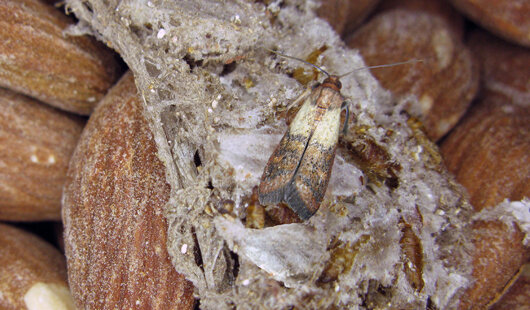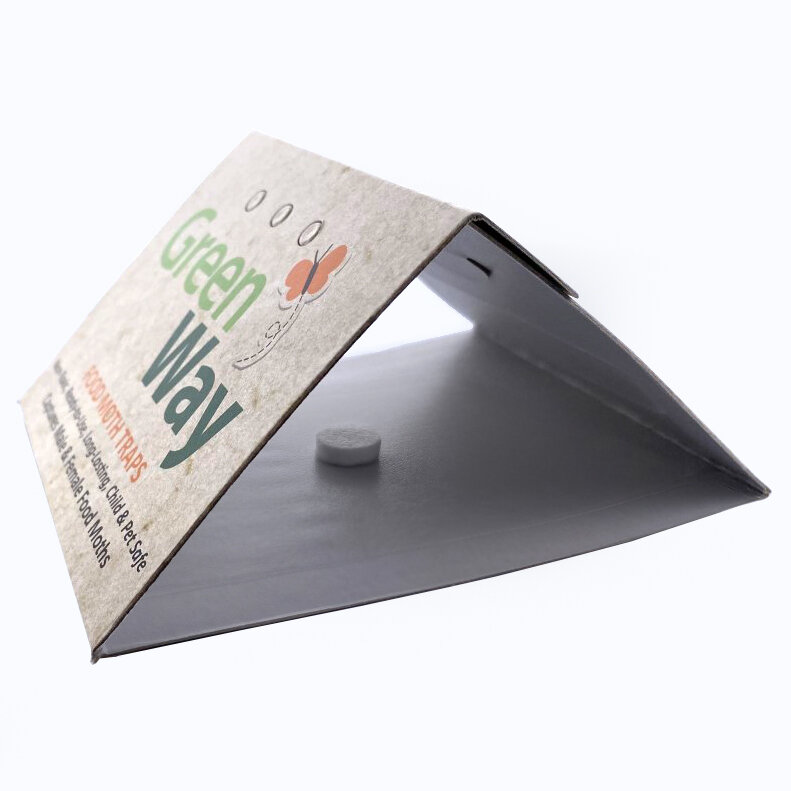Food Moths
Pantry moths are destructive pests that can wreak havoc on an unsuspecting pantry or cupboard. If you spot moths in your pantry, the only way to be rid of them is to thoroughly wash everything out and discard anything that was infested. Additional measures can also improve your odds of keeping the pests from coming back. Here's what you need to know about getting rid of pantry moths.
Managing Food Moths
Inspection
Look for adult moths or larvae. Adult moths are generally a cream color with copper to bronze-colored scales, and they measure roughly 1/2 inch long. Larvae are also about 1/2 inch long and look like white to pinkish-colored worms with brown heads.
The easiest way to spot a pantry moth problem is to actually see an adult moth flying around your pantry. This usually happens late afternoon and night rather than during the day.
If you suspect that you may have a pantry moth infestation, check all the dry food in your pantry. Moths hideout in flour, cereal, rice, and other grains most often, but you should also check pet food, dried fruit, or any other dry food products. In short, check everything including the birdseed in the garage.
Examine the corners and edges of the cupboards and pantry, as well. Check for cocoon webbing. Look in the corners and along the inside edges of the pantry for clumps of stringy or grainy material. Webbing does not often appear in food, but if you spot something that you suspect to be webbing while examining your food, it's best to treat it as such. Inspect the lips of all your cans and jars. Pantry moths are capable of spinning webs in these lips.
Cleaning
Remove everything from the pantry. In order to clean the pantry thoroughly, it needs to be empty.
Use a vacuum cleaner with a hose and an angular nozzle attachment to clean the walls, baseboard, and corners of the pantry or cupboard. Clean under all shelving liners. Remove any old liners and vacuum beneath them. If the liners are in bad shape, you may need to replace them. Focus on areas with webbing, larvae, or adult moths, but vacuum the entire area. This includes all hardware, wire shelves, and screw holes in the cupboard.
Scrub the pantry with soap and hot water. Use a dish towel or sponge to wash the walls, floors, doors, and shelves of the pantry or cupboard. Make sure that you get the door hinges and door jamb, as these spots are the most common hiding places for larvae. You should also scrub beneath any shelving liners or interior racks. Wash old containers in hot, soapy water.
If you have plastic food containers currently in your pantry, wash them in a dishwasher or use hot water and dish soap to scrub them out thoroughly. This is an essential step if the containers were exposed directly to the pantry moths, but even if there were no pantry moths inside the container, it is still a good idea to temporarily remove the contents of the container and wash it. Doing so will also allow you to more closely examine the contents for evidence of infestation.
Dry everything thoroughly. Before putting everything back into the pantry, dry the inside of the pantry with clean dish towels or paper towels. Also dry any food containers completely before putting food back in them and returning the containers to the pantry or cupboard.
Throw Away Infested Food
Any food that shows clear signs of contamination should be discarded. If an open bag of grains or dry food does not appear to be infested, but you still have concerns, you can either discard the food or place it in the freezer for a week. The cold temperatures will kill any moth eggs that you cannot detect with the naked eye. Note, however, that you should discard the material if you can spot larvae or adult pantry moths.
Take the trash outside. The vacuum bag and any trash bags containing infested food should be immediately removed from the kitchen and taken outside. If possible, place the bags on the curb or in an area that does not share a wall with your house.
Set Pheromone Traps
Heavy infestations may require more than one pheromone glue trap to catch remaining moths. The traps contain pheromones in the lure that attract food moths. Male moths gravitate toward the glue, get stuck, and die. As a result, reproduction is greatly reduced.
Remove the release paper on the trap to expose the sticky side. Place the lure in the center of the glue. Place the trap in the pantry, or above the refrigerator, above the cabinets or on a counter. Usually two traps are sufficient for the kitchen. An additional trap in the garage is useful if you stored bird or grass seed or other pet foods there. Glue traps can work for eight weeks, but you may need to change them out if they get covered with dead moths before that time period expires.
Follow Up
Store your food in airtight plastic containers. To prevent future pantry moth infestations, and to save more of your food should another infestation occur, store all grains and other dry goods in airtight plastic containers. If you use plastic bags, only use resealable plastic bags and double them up. Do not try to close the bags with clips or rubber bands.
Do not purchase damaged or opened packages of food. Packages in this condition are more likely to contain pantry moth eggs or larvae.
Freeze newly purchased dry goods for one week. In the event that you purchase goods with moth eggs already inside, freezing the food for one week should effectively kill the eggs. At this stage, they will be harmless and virtually impossible to spot with the naked eye.


